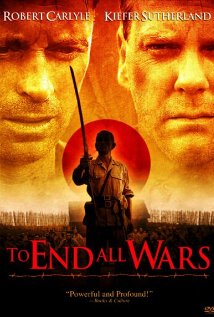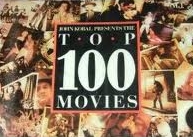I moved, last night, to the treehouse. There is energy, peace and quiet on The Beech Treehouse that I lovingly built. It is my best place to cultivate self-awareness, nature-awareness, other-awareness, creative problem solving and focusing my energy to do and create.

Steven Covey said that all things are created spiritually before they are created physically. His metaphor was God’s creation of the universe. In the beginning was the word. The word is spoken thought and truth that preceded creation. The universe was created in the mind of the creator before it existed. Similarly, Napoleon Hill wrote Think and Grow Rich. Hill’s thinking preceded the book. The book inspired seeds of thought that preceded wealth creation for millions.
Wealth comes in many forms. Money is essential. It is the easiest form of wealth to quantify. But it is only a means to greater forms of wealth. (See “Money, Entrepreneurship, Meditation and Joy“).
All forms of wealth are created beginning with self-awareness.
Roger Hamilton said, “I believe entrepreneurship and this whole idea of raising consciousness come from faith and three things: self-awareness, then self-mastery, then self expression. You can only get to self-expression, which is where all the money gets made, if you’ve actually got clear in self-awareness first.”
Self-awareness is where you begin. It is where you learn your strengths, talents, weaknesses, interests, values – the things that will direct and guide you through life, give you purpose, drive and energy. It is the place where you begin to understand the needs of others as you explore needs in yourself.
I was asked to teach marketing strategy as an adjunct at the University of the South (AKA Sewanee). I taught for five years. Most basic among marketing principles is that the marketer must satisfy an unfulfilled need of a defined group of people of significant size. The quickest, most sure way to find that need and that market (people with that need) is to look within. The self-aware person understands at depth, his own needs and is able to intuit those needs to others faster, more accurately and with nuanced understanding better than big data with artificial intelligence.
Great men and women changed the world, overcame intractable problems and became fabulously wealthy because they saw needs more clearly and complex solutions more simply and elegantly than all the MBA-enabled smart people around them. Self-Awareness is always the beginning point. Our modern examples include Steve Jobs, Elon Musk, Mark Zuckerberg, Bill Gates, Jeff Bezos and my favorite, Mahatma Gandhi. Extraordinary self-aware minds, extraordinary impact.
You should know yourself better than anyone else can. I say “should” because most people don’t. Hence they fail in business and in life because the seed of all creativity fails. No seed, no roots, no stalk, stem, trunk, branches, leaves, flowers – no fruit. Self-awareness is not the be-all, end-all. It is just the beginning. But it is the solid beginning without which there is no happy ending.
And so, I go to my place of meditation to explore myself. The process is not born of narcissistic navel-gazing. No, it’s a process that begins with self, but quickly transitions to connecting dots outside the self. Then, to energizing, hope and faith-filled dreams and strategies. Dots that, in our distracted, frenetic world seem unrelated, irrelevant or unimportant. Yet, these are the very seeds of creation, elegant strategy, wealth through and beyond money – JOY.
Throughout my business career, I discovered that my greatest strength was in strategy. At times, I was able to create a vision that inspired action in others, solve problems or develop a franchise that flowered into more than ten thousand stores, producing wealth and convenience for millions of people. That story is for another time.
It wasn’t enough. I tired of the constraints of large corporations. I “retired” to become an entrepreneur. I made every imaginable mistake, yet I succeeded on the back of the ability to change strategy nimbly and effectively when situations changed radically. I bet the farm on 750 acres of land, three miles of breathtaking bluff line to develop a high-end, gated residential community, anchored by a Medical Spa that would holistically care for retiring baby-boomers. That strategy was based on market research and what I thought was a bullet-proof business plan. Three months after committing my entire life’s savings, with debt secured by everything I owned, the sub-prime mortgage Real Estate crash occurred. It was followed in 2008 by the whole economy. My target market disappeared. Every developer with similar plans and aspirations on the South Cumberland Plateau in middle Tennessee closed up shop. My bank was awash in foreclosed land from failed developments like mine. But, they stuck with me because I was making a few sales when no one else was making any. My banker could see that my new strategy, market positioning and personal passion were aligned and working. I was still making lots of mistakes that slowed me down. But that alignment saved me. It came from knowing myself and knowing that others in similar conditions and similar mind-set would want what I wanted.
Today, the Village on Sewanee Creek is alive and well, an intentional community quietly fulfilling its purpose in the lives of those who live here. They reassure me that what I created was good. It blessed their lives. That is meaning, purpose, joy and a kind of wealth. I reflect on the seventh day of creation, where God stood back, Took a deep breath, rested and proclaimed his work “good”. That is a kind of wealth called Joy.
Today, after teetering on the edge of bankruptcy and despair, I am not financially wealthy. I lost most of it. But I am debt free and wealthy in other ways. I am confident that money will return as I satisfy the needs of more and more people. The Village has been an exciting (sometimes depressing) ride. I have learned much about myself and the world I live in. That is my seed for creating great wealth of many kinds.
It’s been thirteen years in the wilderness. Like Henry David Thoreau, I came here to live my life deliberately. Over that time, I systematically, deliberately, thoughtfully developed a natural strength into a proven process that is changing my life for the better. I hope to use what I have learned to change many lives for the better.
I thank God and all his creations (including people like you) for making all this possible.


 So, about thirteen years ago, I left to develop an intentional community with lofty goals that involved my ikigai based on self-reliance, integrity and mutual love, service and an abundant lifestyle within a closely bonded community. In October 2006, I purchased about 750 beautiful, remote acres on Tennessee’s Cumberland Plateau, the Grand Canyon of the Southeast. It was just three months before the sub-prime mortgage Real Estate bust. It was my personal version of the “
So, about thirteen years ago, I left to develop an intentional community with lofty goals that involved my ikigai based on self-reliance, integrity and mutual love, service and an abundant lifestyle within a closely bonded community. In October 2006, I purchased about 750 beautiful, remote acres on Tennessee’s Cumberland Plateau, the Grand Canyon of the Southeast. It was just three months before the sub-prime mortgage Real Estate bust. It was my personal version of the “


 Overlook #17
Overlook #17

















